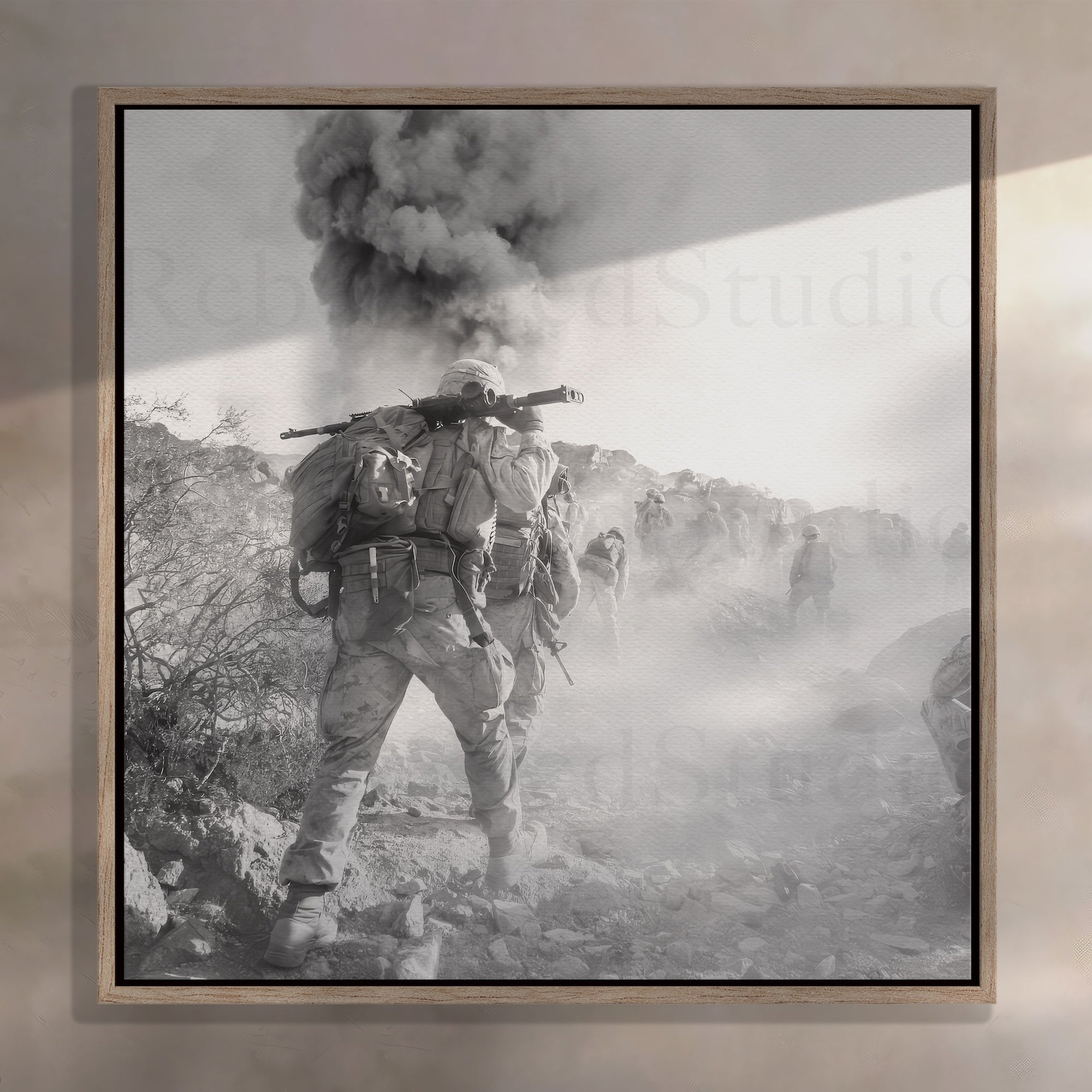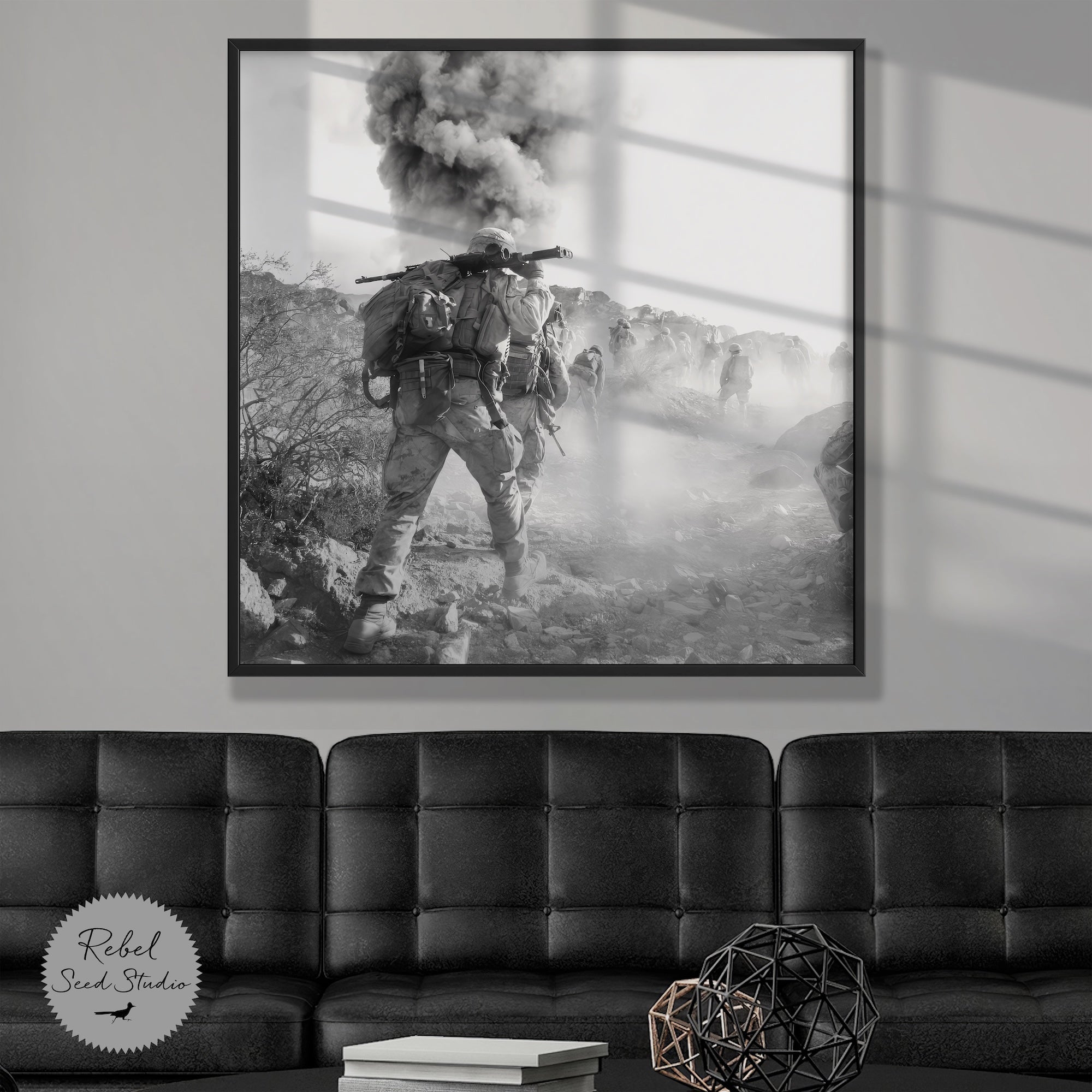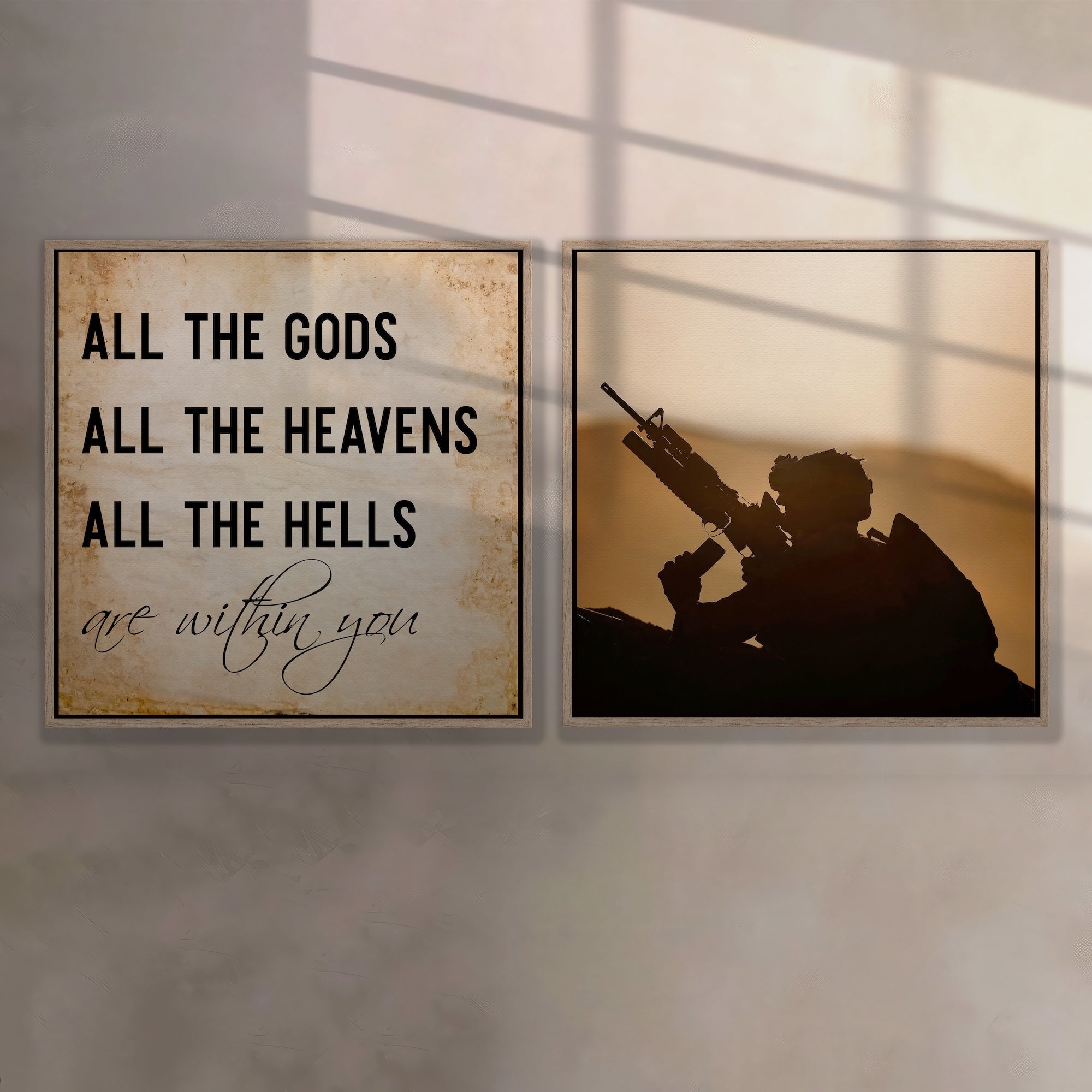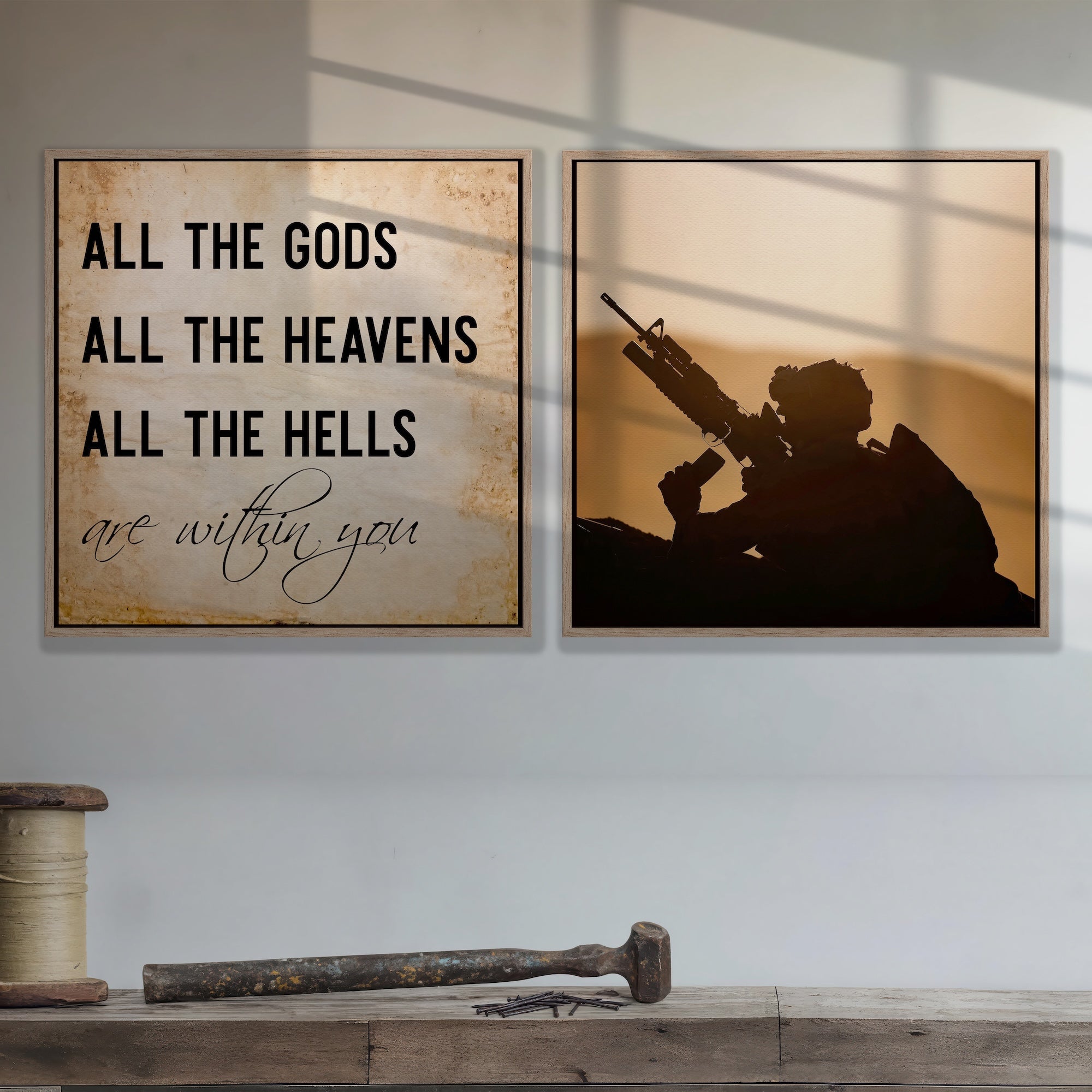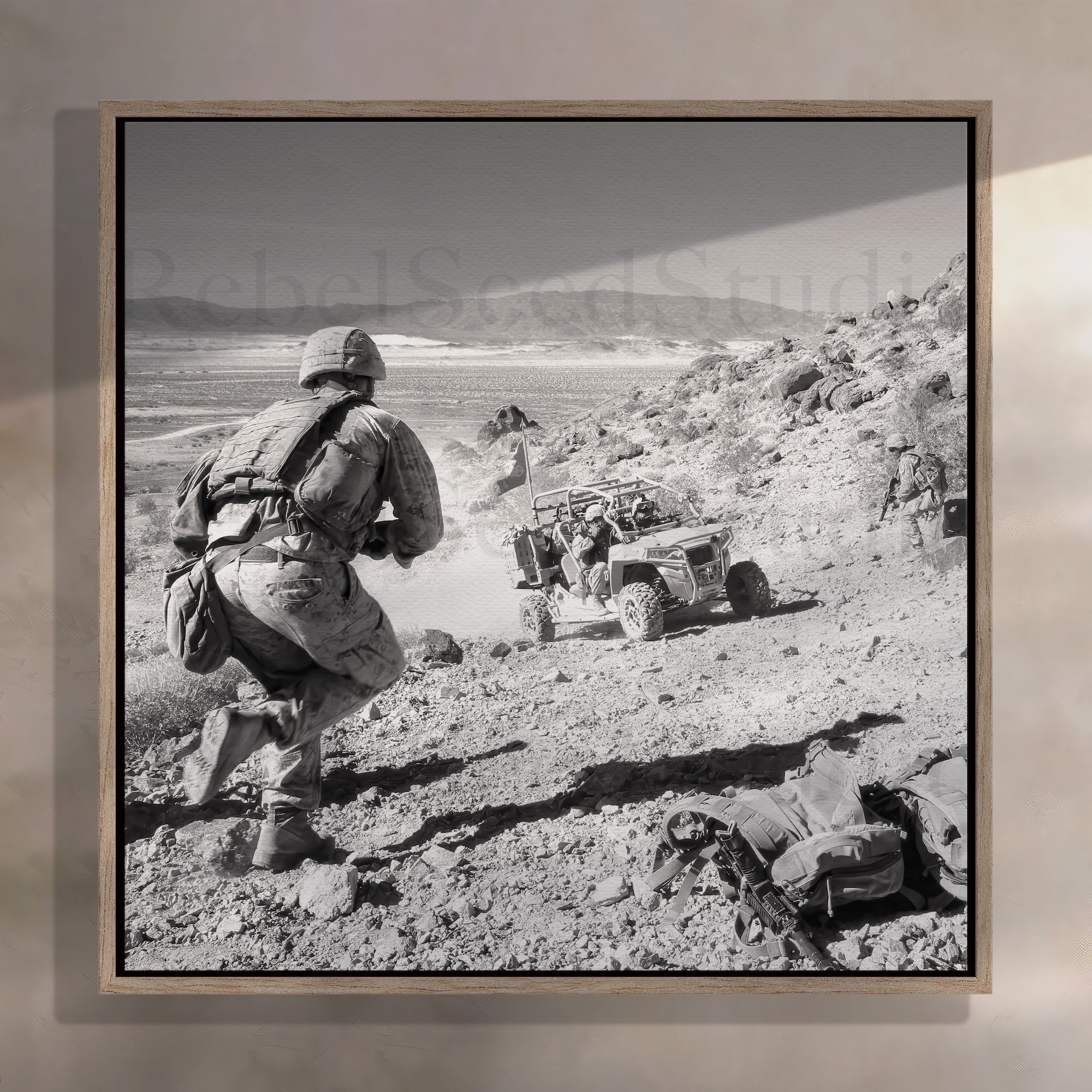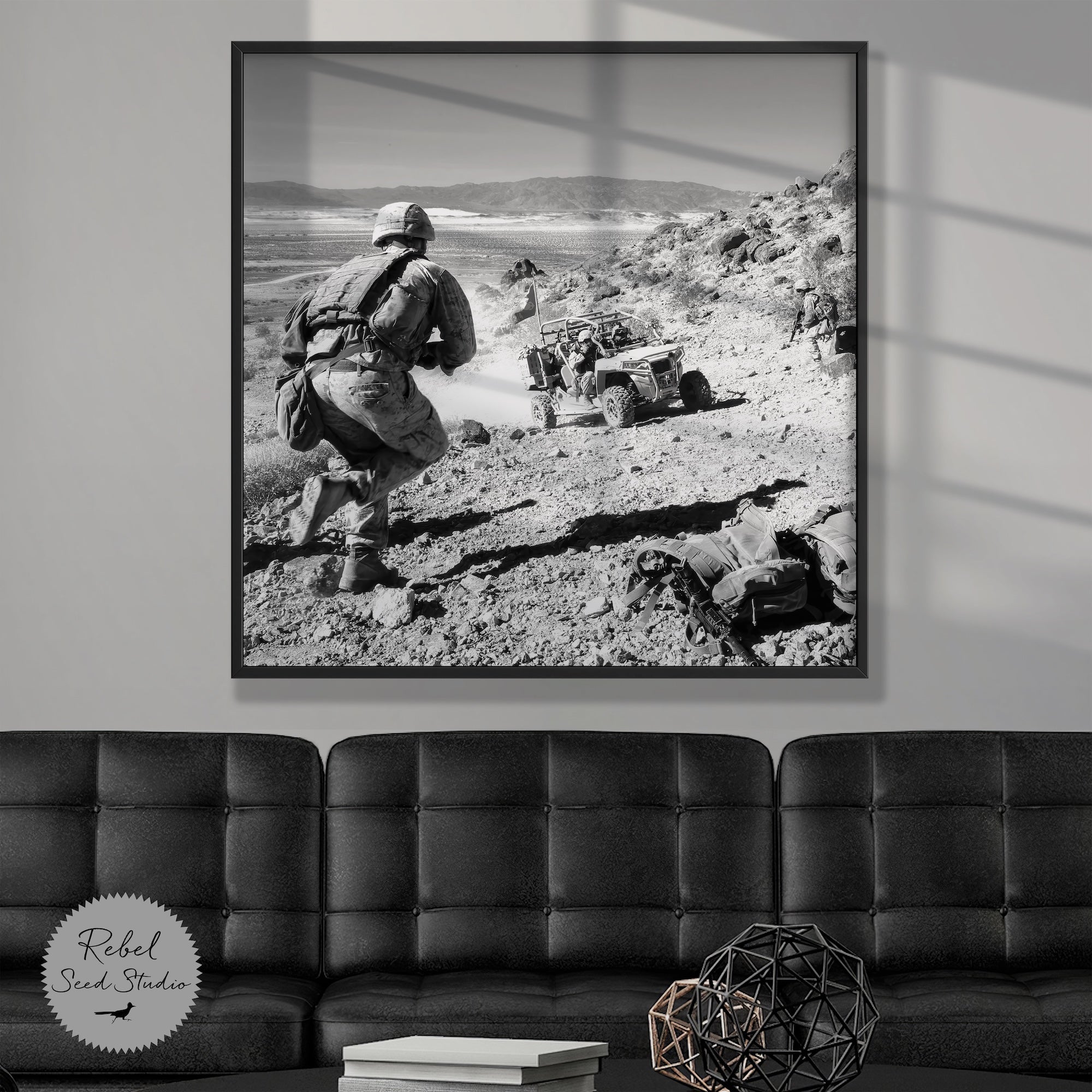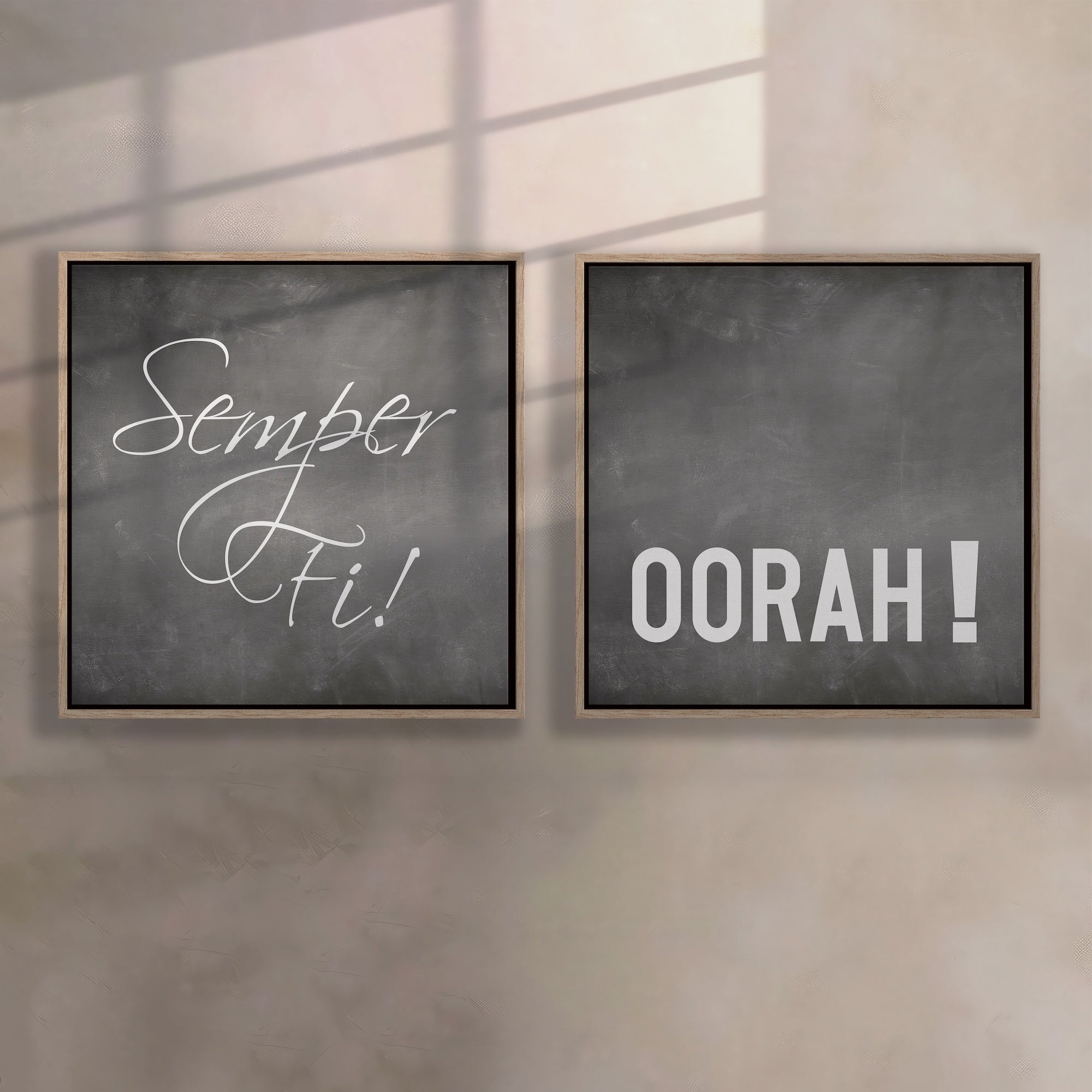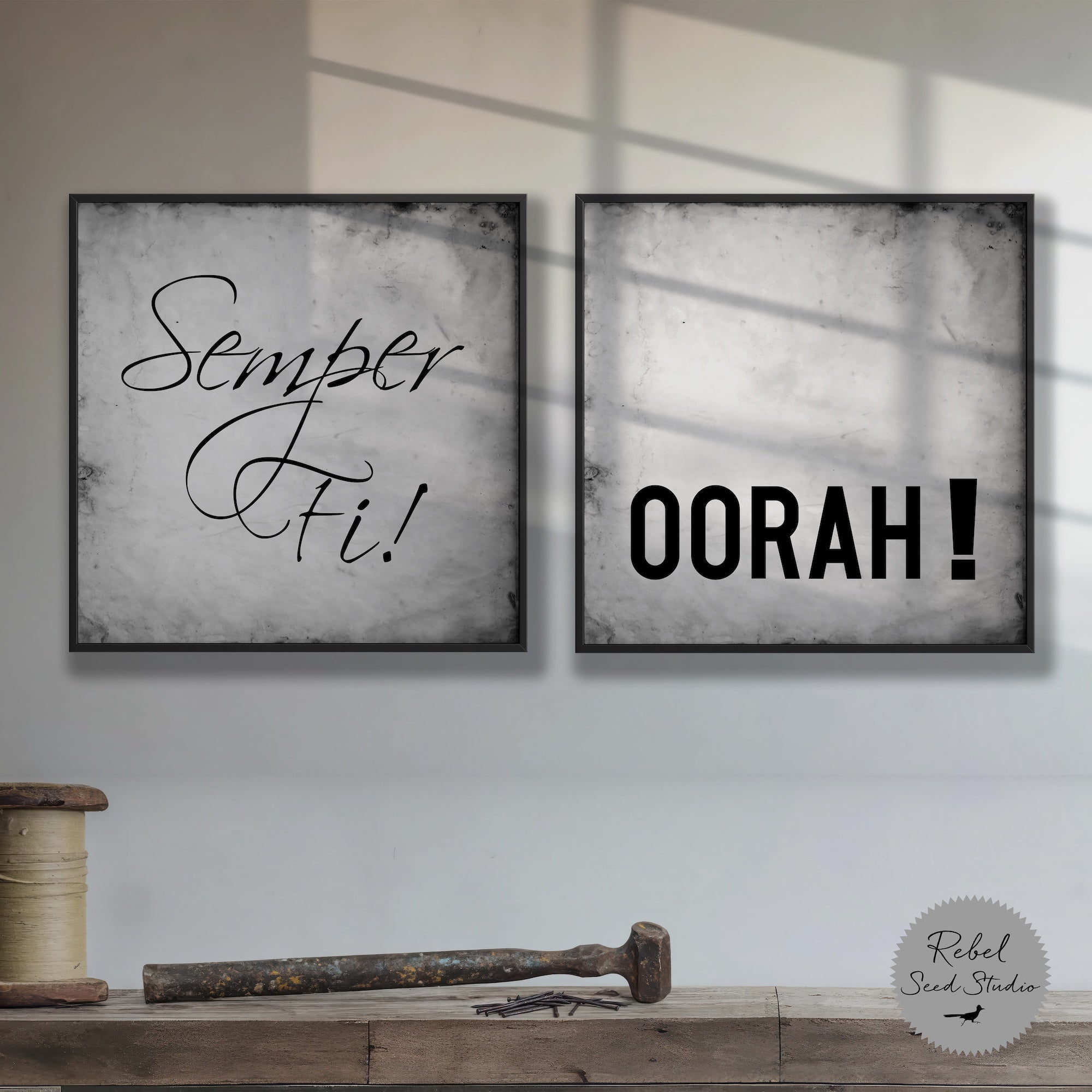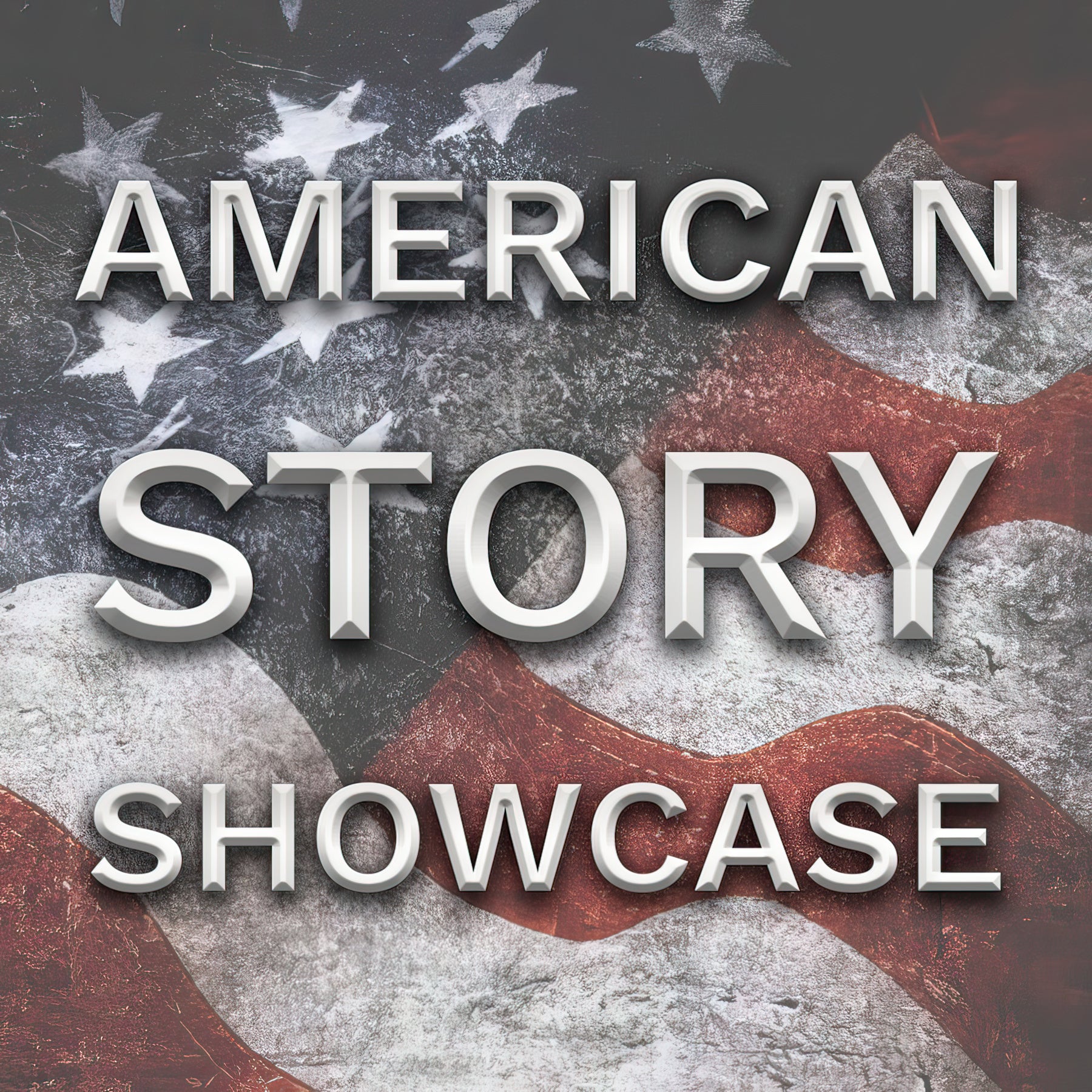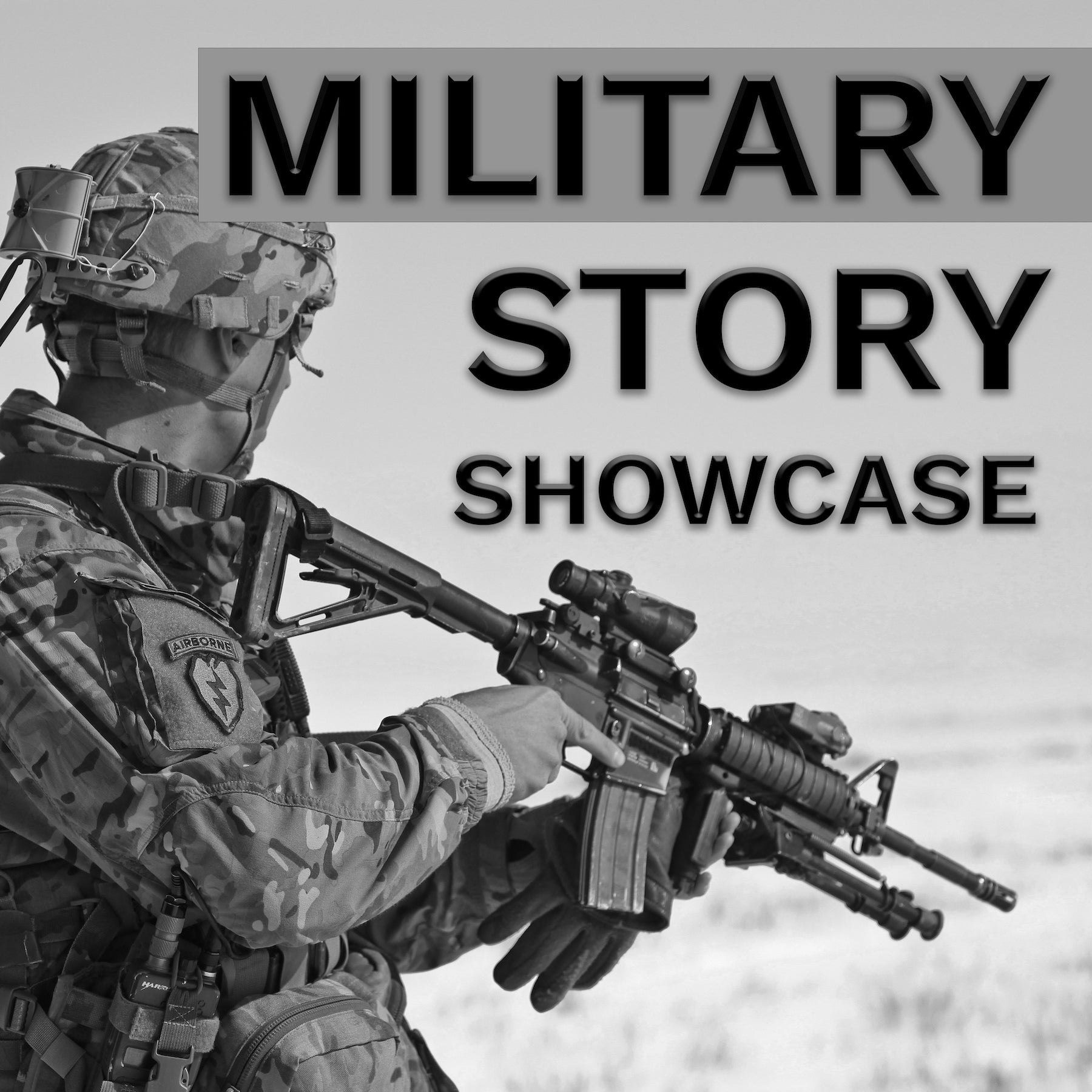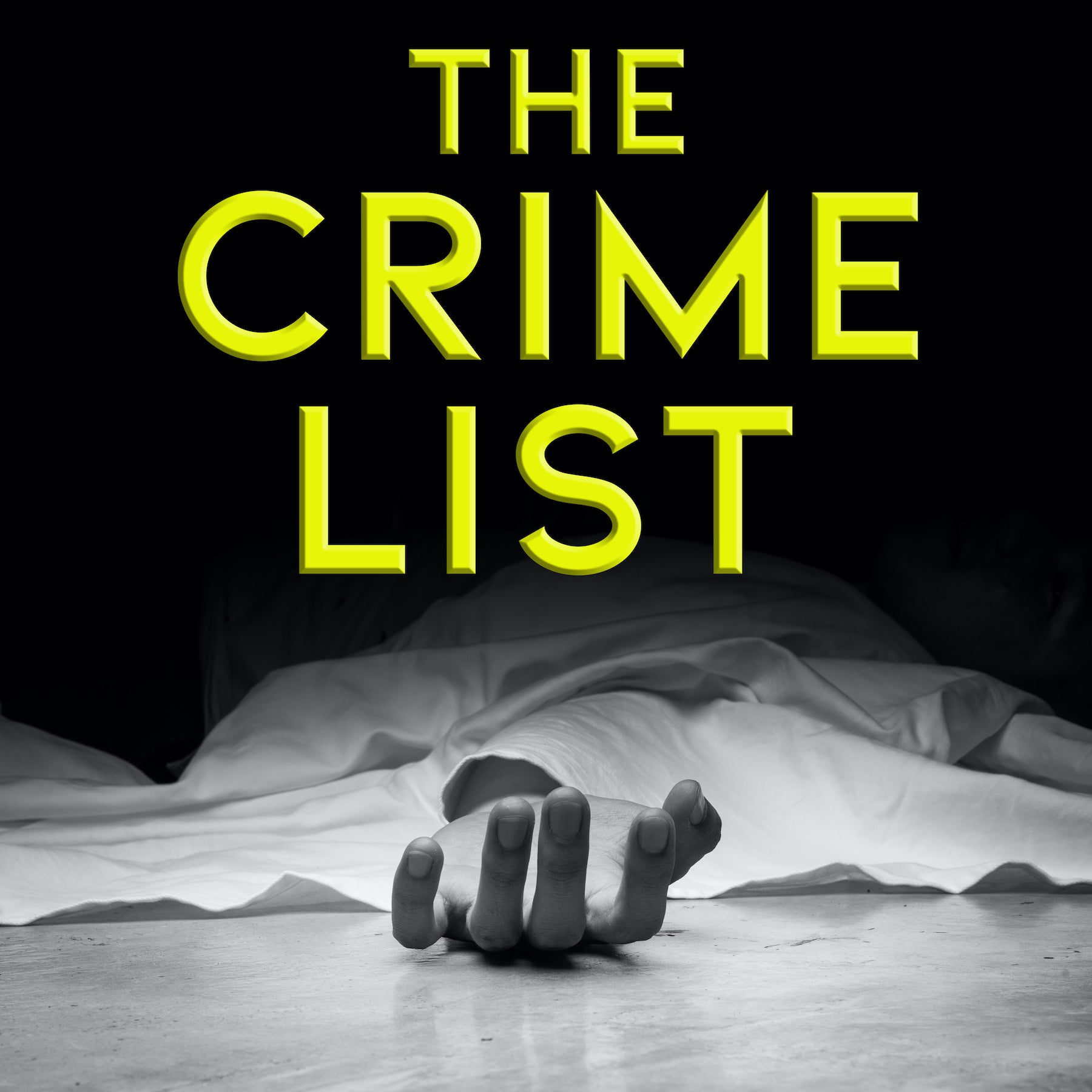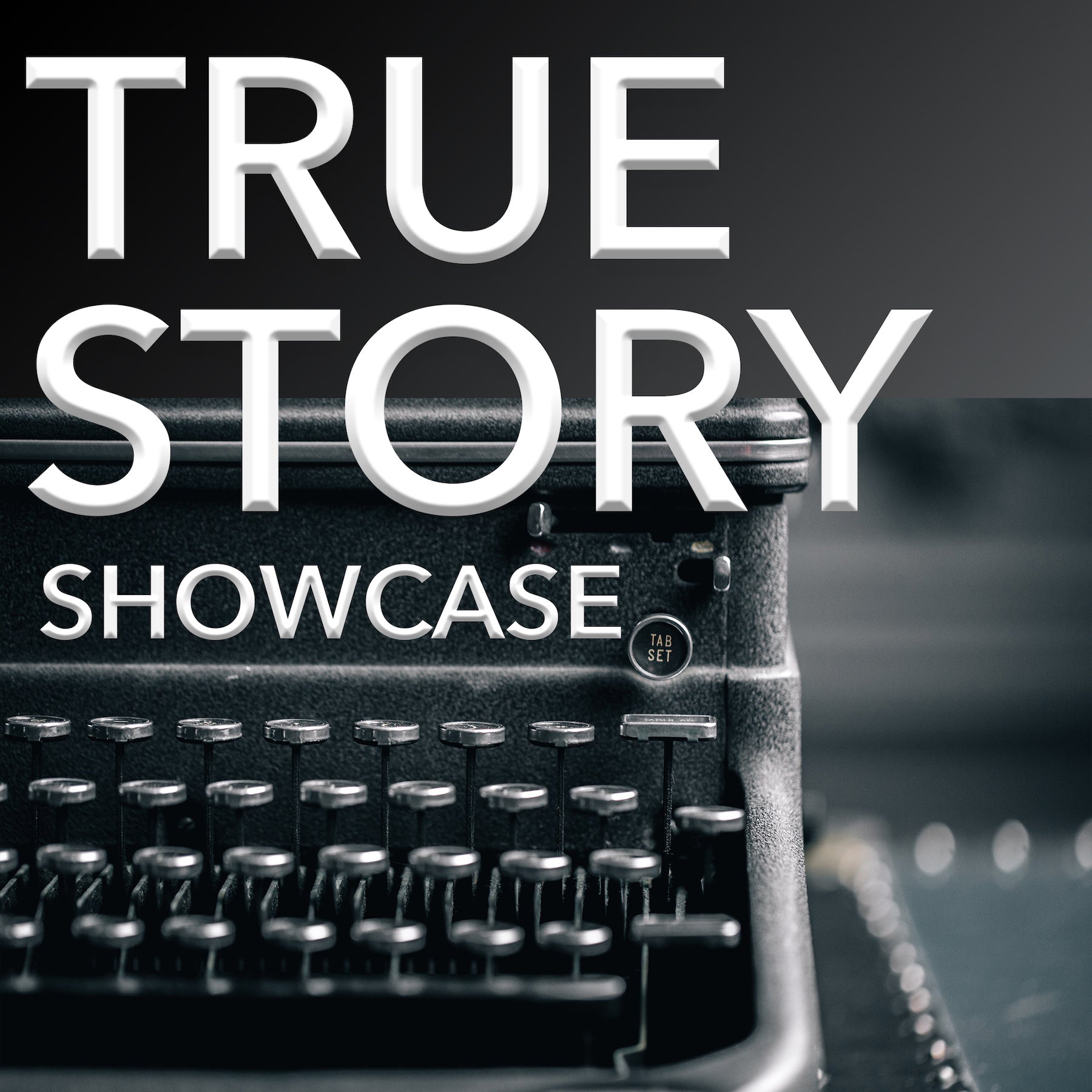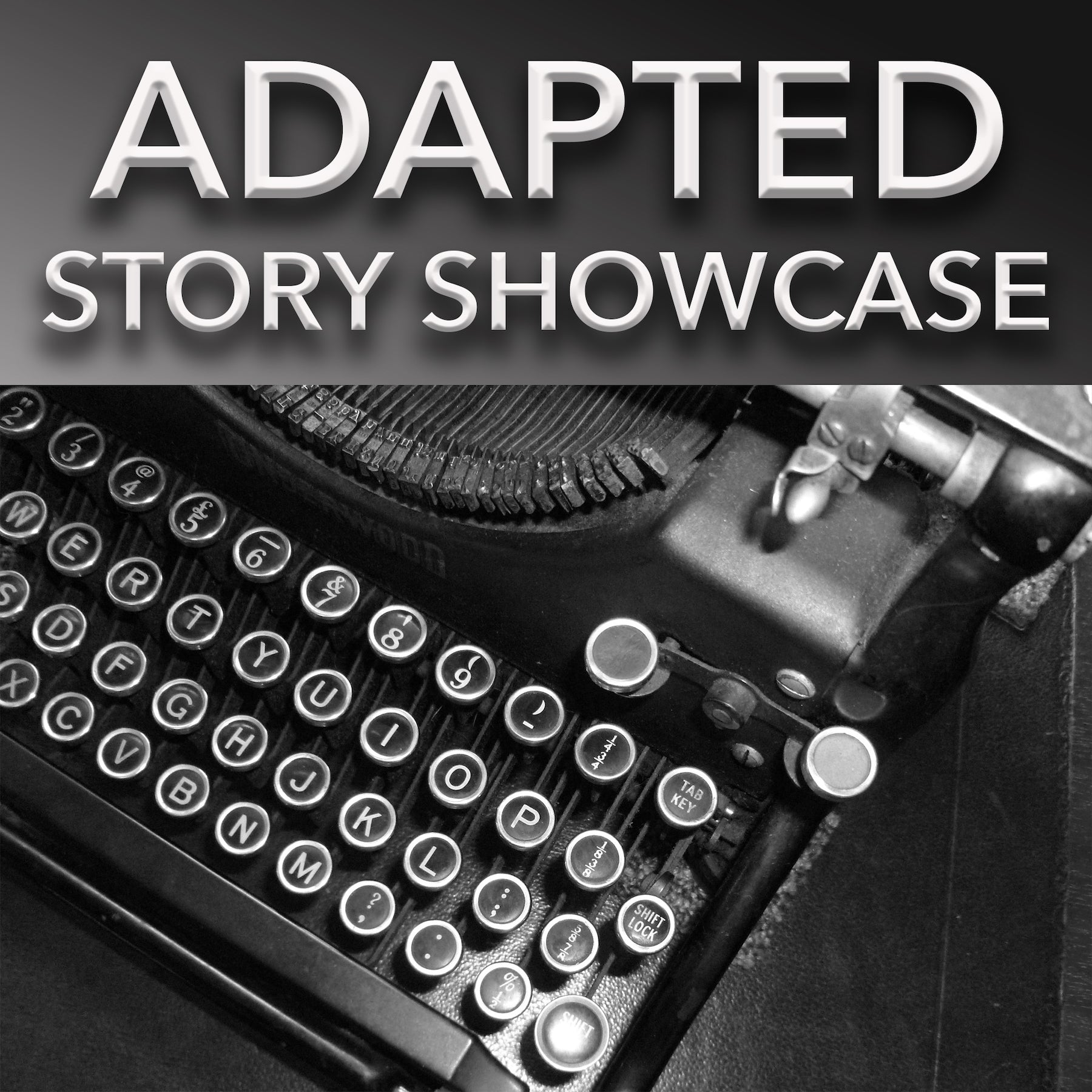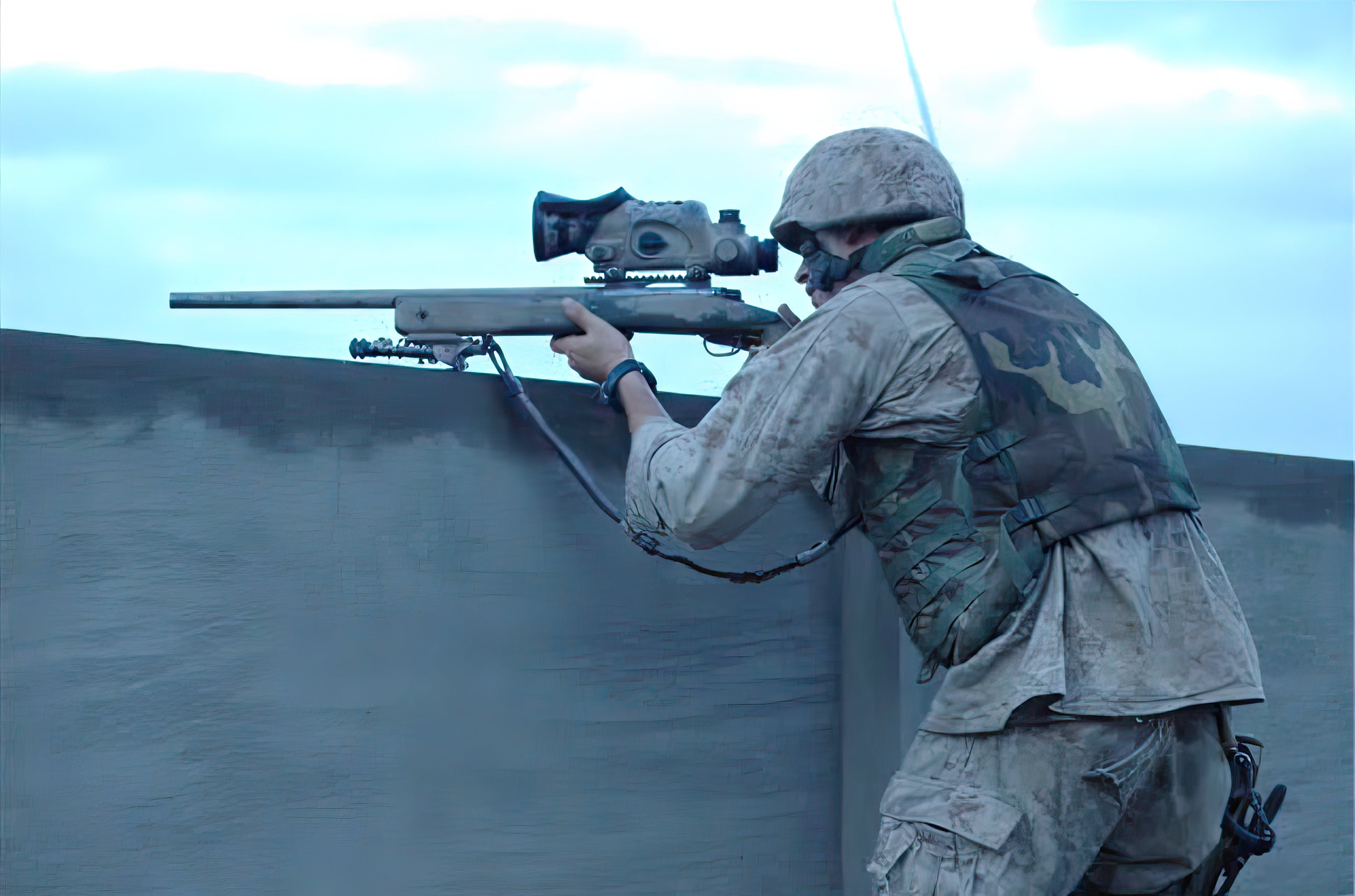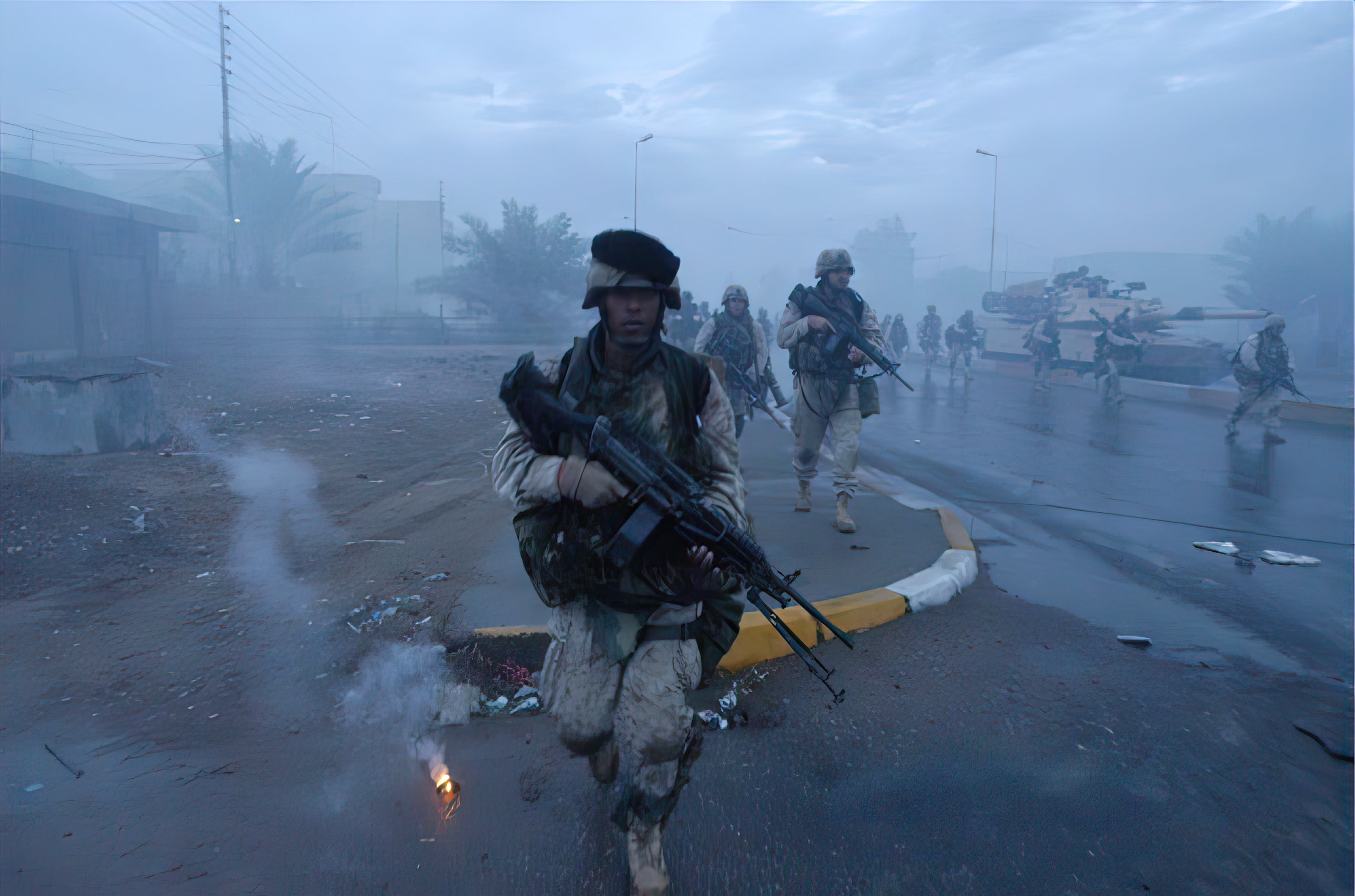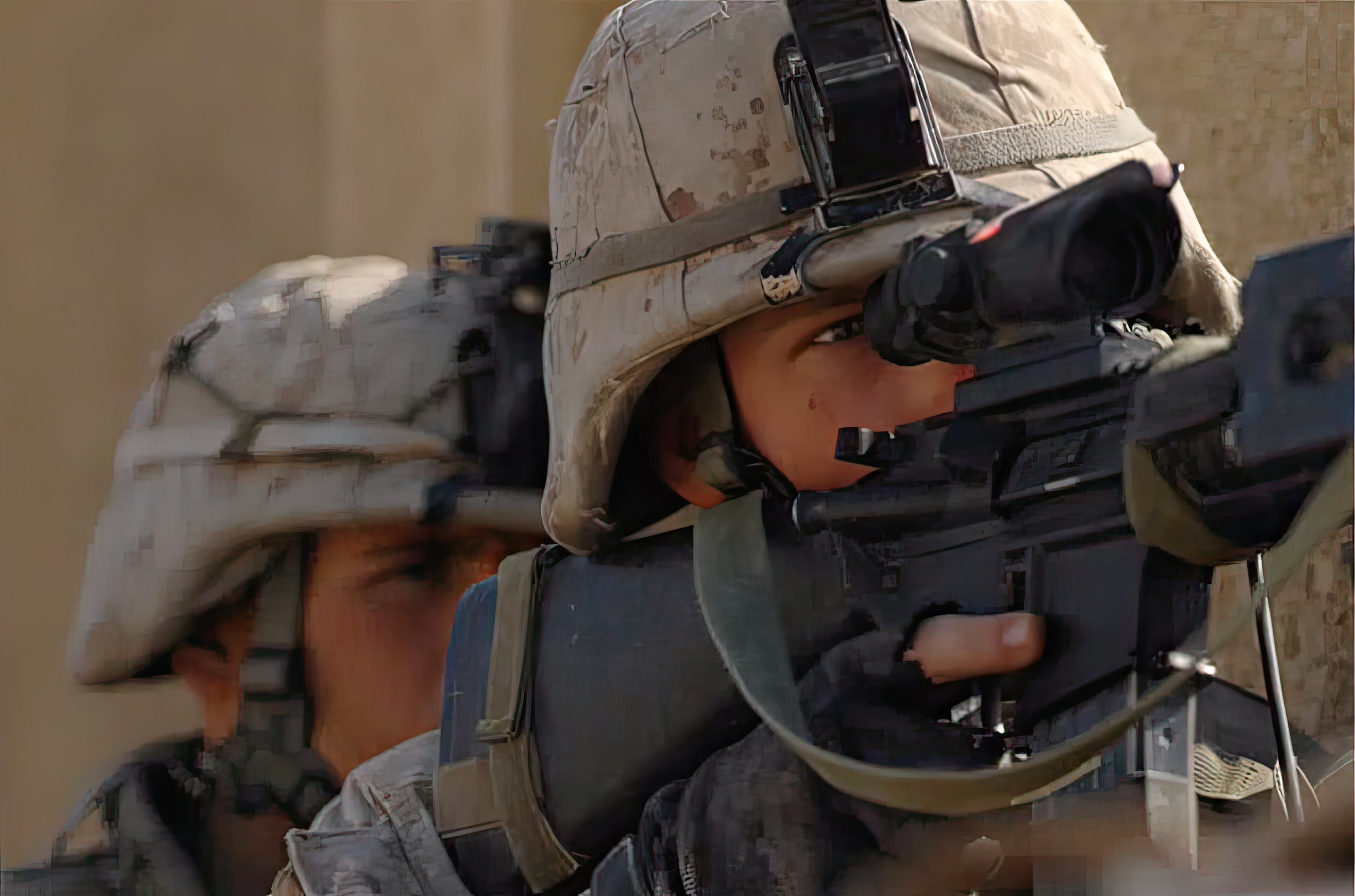
Battlefield Fallujah - Episode 10: Houses From Hell (November 13, 2004)
1st Battalion, 8th Marines is tasked with seizing three major buildings south of the Mayor's Complex. 3rd Battalion, 5th Marines get into a brutal firefight in a house in their zone. 2nd Battalion, 7th Cavalry encounter civilians trying to escape their homes. Alpha Company, 2nd Battalion, 2nd Infantry lose their commander in a deadly ambush inside a house. And, 3rd Battalion, 1st Marines battle it out in, what becomes known as, the infamous "Hell House".
REGIMENTAL COMBAT TEAM 1
The regimental fire-support coordination center (FSC) reported that a Scan Eagle UAV live video feed showed 30 insurgents congregating in three buildings. The FSC approved an air and artillery strike against them. The fighting in the city had turned into a house-to-house brawl.
Colonel Mike Shupp was concerned: "The enemy’s not coming out for tanks, and we are firing multiple tank rounds into these positions and SMAWs into these positions, and it’s not working. It’s not killing the enemy. They’re still firing at us. What the enemy wants us to do is enter into these houses and then they have the first room, they have mouse holes from the top to the sides, the back, and their firing to kill that first Marine and then the fight’s on, because they know the Marines will rescue their first Marine."
To counter this tactic, he stressed that before entering a suspected insurgent strongpoint, the clearing team should use hand grenades, machine gun fire, TOW missiles, tank main gun fire and, if necessary, bombs, satchel charges, or D9 bulldozer demolition to eliminate the threat.
A regimental report noted that the bulk of the fighters seemed to be Iraqis with some foreign fighters mixed in. Many wore U.S.-style body armor, vests, Kevlar helmets, and U.S. style uniforms. It was difficult to determine how many foreigners were in the fight.
Captain Jeff McCormack, 3/1's Intel Officer: "It was initially tough because we’d detain somebody or kill somebody and they had an Iraqi ID card on it so everyone was ‘Oh, he’s Iraqi, he’s Iraqi.’ It was really our linguists who, you know, they're not American but they're Iraqis and they’d be like, 'No, this guy’s -- that’s not Iraqi dialect, that’s Syrian', or, 'I’m not even sure what that guy’s saying. It’s Arabic but it's not Iraqi dialect.’ As we quickly found, with, like, one Iraqi ID making factory and the foreigners that we did catch, all of them said the same thing, no matter what country they came from, as soon as they came across the border in Iraq, they got issued an Iraqi ID. So, we had to go back, have some experts look at those IDs we had recovered from previous dead guys or previous detainees and take a real look at those ID cards and see if they were fake ID’s. And then we found out that there was a number of foreigners. There were a lot more foreigners in that city than a lot of people are giving credit for, right now."
Lieutenant Colonel Willard Buhl, commanding officer, 3rd Battalion, 1st Marines: "Through the entire area that was our responsibility, we believe that we have documentation, interrogations, etcetera, that identify as many as 18 different countries—people from 18 different countries around the Arab world, involved in fighting us. These men had red hair, very light skinned, colored skin, and they were different looking. And, we found battle rosters where you get the name, his nickname, his billet, his country of origin, and what weapon he carried. They’re from all over the Arab world, Morocco, Tunisia, Jordan. It was the Jihad Super Bowl, and as we got further south, these were the concentrations."
Lieutenant Colonel Buhl describes the standard insurgent "uniform": "They have a sort of a safari vest. Some of them had very nice, internet purchased, AK designer, chest rigged vests. Some of them had body armor. Some had helmets, both U.S. and other types. They often wore tennis shoes or light sort of safari type boots. Black trousers, a black headband. I have a mask, with the 'God is Great. There is one God'."
Lieutenant Colonel Buhl reiterated the commitment and determination of the enemy as evidenced by the fight and the religious documentation and 9/11 propaganda the Marines found: "We knew we were in for a fight from those feints, because in a number of cases, we really punished the enemy with heavy applications of fire power, whether it was tank main gun, indirect, aviation fires, I mean, we really killed a lot of the -- and they were coming to the fight. Throughout every engagement we had, these people they marched to the sounds of guns, throughout. And the minute there were any lulls in our fires, theirs picked up.
So, that was an ominous indicator that we were going to run into some hardcore guys down in the south. We knew we had some serious adversaries in the Queens area. Again, through various intelligence means, we even knew that there where companies formed around specific nationalities, principally, Syrian and Saudi Arabian. And, that a couple of these personalities, company commanders, if you will, had people from certain national concentrations in their units, and these were later played out by things that we captured on the scene.
Many, if not all, of the bodies that we searched had small pocket Qurans. We found boxes of Qurans at a number of different safe houses, storage sites, etcetera. Strong religious overtones. We found several prayer rooms with all kinds of banners and posters and things. Connections to 9/11, more in the propaganda version [such as] 'They reap what they have sewn', with a picture of the 737 crashing into the Trade [Center]. So, lots of stuff like this. Kilo Company found a lighter with Osama bin Laden on it. And, when you engaged the flame, the Trade Center -- on one side and it was bin Laden, on the other side was the Trade Center -- it would light up where the airplane was hitting. Yeah. Made in China."
3rd Battalion, 1st Marines
India Company was tasked to clear east to west along Phase Line Isabel from Phase Line Isaac to the Euphrates River. While clearing one building, the insurgents triggered a large amount of explosives that leveled it, killing one Marine and injuring six. The company continued to find evidence that the insurgents were using drugs.
Colonel Shupp: "There’s a lot of signs that they took drugs. I don’t know if there’s been any forensic tests on these bodies and found out what was in ‘em. But we found lots of empty vials of adrenaline, Novocain. We found bodies with tourniquets on their arms, different places where all they had to do is cinch it tight, in case they were wounded or hurt. A lot of expended hypodermic needles all over the battle space."
Lieutenant Colonel Buhl: "We saw evidence of use of narcotics in the vast majority of the homes we entered that had any sort of other related insurgent or terrorist paraphernalia [interviewer: "okay"] whether it was weapons, supplies, food, literature. We saw a lot of syringes, dishes that they cooked the drugs in, the small sort of chemical dishes, needles. And, we captured, confiscated, a large number of substances. A lot of use of adrenaline. A lot of bottles labeled adrenaline."
What was also clear was the determination of the insurgents to fight to the death.
Major General Richard Natonski: "One of the things we found in the city [was] Abu Ghraib and what a stain it was on the reputation of the United States and the effect it had in the Muslim world from an IO perspective. One of the second or third order effects of the Abu Ghraib prison scandal was the fact that many of the insurgents [who] had fought in the city had been brainwashed by films and photographs of the Iraqi prisoners being maltreated by American soldiers and they were told that if you're captured this is what’s going to happen to you. So, they did not want to get captured. They wanted to fight to the death. And they did that. Some were on drugs… speed, amphetamines. Others had tourniquets around their arms and legs so that, if they got shot, they could continue to fight. But they literally fought to the death. So, the fact that we had that scandal in Abu Ghraib made the resistance that much tougher when we had to fight in Fallujah."
Kilo Company received orders to hold in place at the mansion complex and conduct local security patrols.
1st Lieutenant John Jacobs, Platoon Commander, 2nd Platoon: "First thing, the morning of the 13th, 3rd Platoon went out to conduct local patrols to our north, kinda clear out some of these houses where a lot of the insurgents had run to after the fight on Phase Line Henry"
Nothing on November 13 seemed to indicate that the day would be anything but the same old stuff: search and clear.
Lance Corporal Justin Boswood, Kilo Company: "The plan was, they were gonna start back sweeping, or back clearing, the Jolan district from where we were at. And, I guess, you’d say the push is pretty much over. It was November 13th, when they started back clearing, but we still weren’t done. We thought we were done, but we weren’t. My platoon went up on a QRF for a company and 3rd Platoon, probably 1st Platoon, they set out to start clearing in zone. Hell, 3rd Platoon didn’t make it a block away from the house before they come into a house that was just covered with foreign fighters inside. The first couple guys that went in immediately started taking fire. Had a good little shoot out on the bottom level. As they moved in, the house had a rotunda, and started taking more fire. Shit, probably four or five guys right off that was just wounded. Ended up having to push in at rooms all underneath the rotunda to get out of the line of fire. Already calling in support.
1st Sergeant [Brad] Kasal, he was there, and he was Weapons Company, 1st Sergeant. He was with 3rd Platoon ‘cause they had CAAT attached to them, ‘cause they didn’t have any tanks or AMTRACs with them, so they had CAAT for the up-guns. And, 1st Sergeant Kasal went in with PFC [Alexander] Nicoll and I think Sergeant [Byron] Norwood. I think that’s when he entered. And they went in, and right off the bat, when they entered, 1st Sergeant Kasal—they made it, the run through the rotunda, and they didn’t get shot at for the first minute that they went through the rotunda, and when they went into one of the back rooms, 1st Sergeant was clearing the room and swept and looked to the left, and rounds just started flying, and he was staring right at a damn Hadji. So, he shot him. He got shot himself from behind. And, I think, from the front he took maybe two rounds. He backed out of the room and Nicoll had been in the main room of the house, under the rotunda, and he’d taken a round in the leg.
So, 1st Sergeant grabbed him, and they started making their way into the shitter room, this really tight, little, cramped room. It probably wasn’t even six foot by four foot. And they’d pulled in there and as soon as they got in there, the foreign fighters upstairs, they just started dropping grenades like it was cool. 1st Sergeant covered Nicoll through the blast and absorbed most of the blast himself. Had other guys just pouring into the house trying to get in and get at it. Everybody, at that time, there was probably, shit, six, seven casualties in there. Sergeant Norwood went to go in. Peeped his head around, trying to get his shot up in the rotunda, and caught one in the forehead.
At that time, Corporal [Francis] Wolf, and a couple of his boys, they again tried to make entry in and tried to find out what was going on, and Wolf got shot a couple times in the chest with his SAPI Plate. He got right back up. And that was just Wolf, he’s just a hard head. Hell, even if he would’ve been shot in the arm, he still would’ve been going. It was just raw determination. So, there was pretty much, about 11, 10, or 11 wounded, and one KIA in there at that time. And that’s when they called up QRF. All that probably happened within maybe two, three minutes time span, if that. Fast.
Called up Company QRF, which we were about a block away. We all heard the firing, but we didn’t know what was going on. And when our platoon commander come in, [1st] Lieutenant [John] Jacobs, all he told us was 3rd Platoon ran into some guys in a house and they were hurting in a bad way. They had 10, 11 wounded, and one KIA. Pretty surprising to us. We were all pretty shocked that we were so damn close. So, we took off running out the road. First spot, second spot, third spot, order of movement. We had about two, three HMMWVS, that 2nd Squad was on, had security on. And as soon as we ran to the corner to go down the road to the house, we started taking fire from the top of the house. My spot advanced and returned fire. Cleared the building on that side of the road. Set up the support by fire, and I continued to fire on the house.
For some reason the rest of the platoon didn’t advance. I think they were holding ‘em back in reserve ‘til the others know where to push ‘em, no cover, no nothing. We set up our own support by fire and <unknown word> into our squad and punched across the road and run up into a house. And when we got into the house, 3rd Platoon’s platoon commander, [1st Lieutenant] Jesse Grapes, he was there, standing at the doorway. And him and Lieutenant Jacobs, they were pretty good buddies, he just said, 'Hey, you know, what’s going on? What’s the story?' He was just trying to let Lieutenant Jacobs know what was going on and he told him to the best of his ability what he could, but he didn’t really know anything himself, ‘cause nobody could get into the room to find out what was going on in there.
And he told him the number of guys he had in there and roughly where he could tell, to the best of his knowledge, where they were inside the house. And, we started devising a plan on how we were gonna get in there. None of us really could tell what the set up in the room was ‘cause all of us outside hadn’t been inside, and the ones that had been inside were already CASEVAC’d. They were all shot up, either walking wounded or had to be carried out. So, we had no idea what the inside looked like.
Lieutenant Jacobs said he was gonna throw a flash bang on the roof and he wanted us to run into the open area and try to get into one of the back rooms. And when he did that, everyone just kind of stood there like, 'No, not yet.' Just wasn’t feeling the—momentum wasn’t there. And AKs were clattering from upstairs into the downstairs. And from their positions, they could shoot in pretty much every doorway, so you had to stand way the hell away from the damn doorway. The second time Lieutenant Jacobs said he was gonna throw a frag up on the roof, try to distract ‘em, and then Kody Barnes and Sean O’Rourke, they were gonna run across to the back room and try to get in and see where all the Marines were, see what we could do.
When they popped the corner to run in there after the bang, Kody could see one of the insurgents standing upstairs on the edge of this rotunda just gunning down. He popped off a couple rounds and pulled back and he was damn lucky he did or [he] probably would’ve ended up getting himself shot. So, we pulled back into the room and decided that that wasn’t the best way to enter that house and we had to come at it from a different angle. So, we pulled outside.
There was a kitchen door to the right and myself and Lance Corporal [Christopher] Marquez and our Doc, Shaun Aragon and we went in through there. And as soon as I went into the kitchen, I was like, 'Holy shit!' 3rd Platoon’s platoon sergeant was laying in front of the door. He was just all kinds of riddled with shrapnel. I don’t know if he’d been shot. He might’ve been shot once, but just shrapnel everywhere, his shoulders and his leg. And he was laying right in the doorway and the door was closed and it had a kind of non-see-thru window on it, and I was like, 'Holy shit!' I couldn’t believe this guy had been here this long and nobody had pulled him out of the house.
And I didn’t really think nothing about the door being where it was and anybody that was up in the rotunda being able to look down in there. It just didn’t really cross my mind. We sat down and started to treat his wounds. As a squad medic I’d assisted the corpsman throughout the push with bandaging up guys, so it wasn’t really nothing new. It was just, you know, another task at hand. So, I posted Marquez on the door. Just had him stand, kind of stand up against the wall, while me and Doc Aragon started to go to work on Staff Sergeant. And we started cutting his pant legs off and Doc was up at his head, checking out his wounds up there, and they just started letting loose with bursts of AK fire through the door, just right in between me and Doc. We kind of did a classic Matrix move and we were like, 'Whoa!' Kind of backed the hell up, and we were like, 'Damn!'
We thought it was friendly fire at first, because I figured they’d seen us moving around behind the door. So, I started yelling, 'Friendly fire, friendly fire!' you know, 'you got friendlies in here.' And they’re like, 'Bullshit, it’s not friendly fire. You ain’t got nobody over there that could get an angle on ya. It’s coming from up top.' I could see through the window, ‘cause it had been shattered by all the fire, and I could see just little feet up there, and I was like, 'Damn, we gotta get out of here. We got to get Staff Sergeant out of here.' So, we pulled him out and took him out to the HMMWV and when we went back, we went into the main room and we were still trying to devise a plan to get in. And there was Marines in two different rooms. In the shitter room, there was Sergeant [Robert] Mitchell and First Sergeant Kasal, PFC Nicoll, and then in the back room, was [Lance Corporal Cory] Carlisle, [Corporal Jose] Sanchez, and [Private Rene] Rodriguez. So, there was six, seven guys in there still.
So, they were talking back and forth with Lieutenant Jacobs and Lieutenant Grapes trying to, you know, see where the guys were, if they could get angles on ‘em, if they could even get close to the doorways they were in. They couldn’t. All the guys that were in there that weren’t shot up, were busy treating the guys that were shot up. So, they couldn’t really free themselves to fire on anybody. We decided we were gonna try to go in through the back window. Lieutenant Grapes told me to run down and grab the breach kit from the HMMWV. So, I went down and grabbed the sledgehammer and a pair of bolt cutters and we went around to the back, left side, of the house to a back room, and there was a dead insurgent laying in the doorway. It was the one that First Sergeant Kasal had shot when he’d run into the house.
The windows, they all got damn bars on ‘em. Probably like quarter-inch think, rebar, or just any kind of bars they could find that they’d put over the windows, and they’re just cemented in. So, we went ahead and started beating the hell out of these bars trying to make entry. We couldn’t use any demo because we didn’t want to injure anybody inside, as far as our friendly units. So, we were there probably a good five minutes, just beating away on the rebar with a sledgehammer. We couldn’t even use the bolt cutters ‘cause the metal was too thick. Me and Lieutenant Grapes and Corporal <unknown name>, my team leader at the time, spent a good five-minutes trying to beat these bars out of the way. Broke the welds. Got... managed to get two bars out. Lieutenant Grapes stripped his gear off and slid through. I was like, 'Fuck, I ain’t letting him go by himself.' So, I stripped down and went in after him. And they passed our weapons and some rounds through and then passed our gear through.
I kind of crawled up on my belly, making my way to the door where the insurgent was at. He was just laying right inside the doorway. I grabbed onto his ankle, and I remember thinking, 'This guy’s fat. I ain’t gonna be able to pull with one hand.' It was tile floor, and when I’d give him a tug, he just slid ‘cause there was so much blood, just huge blocks. It was no problem me moving him. I just pulled him right back with ease. And as I pulled back, Lieutenant Grapes, he went up and jumped down in the prone right where the guy had been in the biggest puddle of blood, I think, I’ve ever seen in my life. Got down and started worming his way up to the door to get an angle on the rotunda. As soon as I moved the Hadji out the way, I went in and got on top of Lieutenant Grapes, angling the other way. So, we were both trying to get an angle, and covering the stairs, and covering the far side of the rotunda.
So, at that time, we had, pretty much, half the rotunda covered. So, we had it limited to where the insurgents could move with us seeing ‘em. And so, half of it was secured and that allowed everybody else that was in there to kind of inch up and inch up as we were firing to get in better firing positions themselves. Got in better firing positions and established good fire support and they decided that they were gonna send Marquez and my buddy, Shaffer, Dane Shaffer. They were gonna send [them] over into the rooms and start pulling people out.
They dropped their weapons and we had a count set. On Lieutenant Jacobs’ count, we started firing. As soon as we started firing, the whole house was just shaking with 556 rounds. SAWs going off with a 200-round burst and the 16s just as fast as you could pull the trigger, burst. Just dropping magazines and reloading and getting thrown mags from the window outside. It was just an awesome, overwhelming fire inside there and it allowed Marquez and Shaffer to run to the shitter room from the kitchen and start carrying out the casualties. They made three trips in and three trips out to carry everybody out under fire. It was pretty awesome. I don’t even know how they could see in there ‘cause there was so much dust and everything flying around from the amount of rounds.
Ended up pulling everybody out and, right next to me and Lieutenant Grapes on the backside, was a room where Carlisle, Rodriguez, and Sanchez were in. And while we were firing up into the rotunda, while they were carting everybody out, Corporal Jensen had come up on the back of the house with a chain that was hooked up to a HMMWV and he wrapped it around the bars and they gunned it and yanked the bars off the window and were able to EVAC Carlisle and get Sanchez and Rodriguez out the back window that way. So, as soon as all the friendly forces were out, and we had everybody CASEVAC’d that we could, started breaking down our combat power inside the house.
We decided we were just gonna blow the damn thing. Our senior 51 [0351] that was with us was Corporal [Richard] Gonzales. This guy was good with explosives. He really knew his shit. And, he come in with a 20-pound satchel and the problem was figuring out where we were gonna lay it. It needed to be somewhere in the center of the house. Hell, the center of the house was the damn rotunda. So, there were still insurgents up there. We hadn’t been able to get a shot on them. They’d pulled back into a little room up top and just were pretty much unaffected by all the firing we’d done while we were in there. So, we started hooting and hollering like there was 20, 30 Marines in there, just cussing and, hell, it was nothing but a stream of cuss words that was out of my mouth. Couldn’t comprehend what everybody else was saying. And we gave ‘em some covering fires.
He run in and he dragged one of the insurgent’s bodies into the center of the house and placed a 20-pound satchel on his chest, popped smoke, and we run out of the house. Went around the corner of the house across the street and the house blew and it was the coolest thing in the world. First thing I noticed was the door. A door was about 100-feet in the air just rolling around. And the second thing was the pink mist that was underneath the door, and that had to have been the insurgent. It was, no shit, a pink mist, like 80 foot in the air. It was awesome. And shit just flying everywhere.
After the blast, we were gonna go up and search the rubble and make sure anybody that was there was dead. And when we went up, there was, not shit, an insurgent trapped underneath the rubble with his right shoulder, I believe, and his right arm and his head, out of the rubble. Dark complected, dark kinky hair, and he looked like a Chechen, and a huge beard. They started walking up to him. It was Lieutenant Jacobs, Lieutenant Grapes and now, Corporal [Andrew] Wingett. They were making their way up to him and they were gonna double tap him.
And as they were making their way up to the rubble, the guy kind of poked his head up and extending his hand, he had a grenade and he tossed the grenade out, and there was probably about eight or, maybe eight or ten of us stacked up alongside the wall. And the grenade come out and we all started screaming, 'Grenade! Grenade!' and run around the corner and get down. The only person who didn’t get down was Lucian Read... that was our civilian photographer that was there. And he just stood there taking pictures and ended up catching shrapnel on both his ankles. It was pretty funny. We all used to give him a hard time about that, didn’t have sense enough to get down for the grenade.
After that, we just all got on line and dumped thousands of rounds into him. Everybody was pretty heated about everything that went off, so, no shit, insurgents that we could see, so, we had a good little ammo dump, and then went up and dead-checked 'em with a bayonet, just to ease our minds. And, we pulled back to the house. That was the 13th. And they started calling that house the Hell House.
There was five Marines decorated with Valor and Combat come out of that house. Sergeant Mitchell got a Silver Star in that house for the Marines that he treated and the insurgents that he took when he entered. Corporal Sanchez got a Bronze Star with Combat V in that house for what he did for Carlisle. Dane Shaffer and Christopher Marquez got Bronze Stars with Vs for that house, for running through and taking everybody out. Lieutenant Jacobs got a Bronze Star with a V for coordinating. Lieutenant Grapes got one with a V for coordinating. Myself, got one for pulling Staff Sergeant out and going through the back room, I guess, it said risking my life by over-exposing myself to direct enemy fire to allow everybody else to come out. So, there was a handful of Marines that were decorated very highly in that house that’s not really well known.
That was a bad day. Probably the worst day we had while we were there. That was the 13th."
3rd Battalion, 5th Marines
3/5 continued to clear houses in its zone.
Major Marshall Bourgeois traveled with Kilo Company, which encountered a major fire fight. A Marine had been wounded when he entered a house where three insurgents were waiting. One of them threw a hand grenade, and then all three opened fire with rifles: "We were clearing. Came across a house that had an old lady in it. Prior to us gaining access to the house, shot some holes in the fence there and there was a gas—a 55-gallon drum that started leaking, so that was a concern for us. So, for a short while, we’re all concerned about this 55-gallon drum, and this lady, who was upset with us because we were in her house. But the house, right past that on the corner of the street, which was the end of one of the phase lines, hadn’t been cleared yet. We just were concentrating—‘Stay away from the gas, stay away from the gas, stay away from the gas.’
Well, after about 45 minutes of screwing around with this, next thing you know, there’s a major fire fight [in the house] right next to it. Company commander goes running in there. The next thing I know, I hear, ‘Get the Major.’ I run up the stairs and there’s still shooting going on, there’s dust everywhere; frags had been thrown. What happened, as the Marine kicked in the door, and there were three enemy that threw a Frag at him, and were shooting their rifles, M-16s, that they were shooting at us. So, as soon as I get to the top of the stairs, the corpsman is attempting to place a tourniquet on this Marines’ left leg, and it was virtually not there. I put my light on and I looked down—very dark in the hallways. And I looked down and, he basically had about four inches of femur sticking up out of the top of his leg, and that was about it. The rest were being held down by his utilities, no tissue was left there. He also had a wound in his right leg, and wound in his left shoulder. And their platoon commander was at the Marine’s head. His name is Lance Corporal Peyton. At the Marine’s head, the Marine’s moaning. The other Marines are very upset.
There are three guys in there, that I thought were dead, ‘cause they kept shooting, and shooting, and shooting. But, what I realized, the Marines were just making sure they were dead, several times over. And, so I’m trying to help put this tourniquet on, get the lieutenant basically out of the way. There’s a corpsman who was—his name’s Lance Corporal or HM <inaudible> - did a tremendous job; he remained very calm. And we were literally six-inches from that doorway where those guys were shooting and shit was going on, and he was applying that tourniquet to that Marine’s leg. And I went around, got his stuff off, lifted the guy up, and the corpsman was still working on his arm, and I said, ‘Hey look, that can wait. Let’s get him downstairs.’ So, we still had to go downstairs, two flights to get the AMTRAC, which is waiting for us so we can EVAC this guy out of there.
One thing we did not know, is underneath his flak jacket, he had received multiple injuries to his abdomen. So, we got him inside the AMTRAC, got him back to the area, and they said, ‘Oh, he’s gonna live’ because of the tourniquet. So, we were all stoked. Good to go. We helped this guy out. Well he ended up dying, I think, that night. We didn’t know about it until like a day and a half later when I went to Bravo Surgical to check on him and they said he passed away. So, that makes two KIA for Kilo Company at this particular time."
That night at one of the command post sites, an insurgent suddenly appeared and sprayed the area with his AK-47.
Major Bourgeois: "One of our CPs that day—we had a mortar position there. We had four or five support vehicles right behind the house—there was like a little courtyard. This is about 1800 at night. The chaplain was there, 7-ton vehicles, the Schwanis were there, so there were about 30 people; Marines and Schwanis. Out of nowhere, this guy, I’ll call him Bob, who was an Iraqi, comes flying through with an AK-47, and started shooting at everybody. He was just like shooting in every direction. And the next thing you know, frags were going off, and then it stopped. And the people were saying, ‘Where’d he go? Where’d go?’ People were yelling, ‘Where’d he go? Where’d he go? Where’d he go?’ This Iraqi had absolutely disappeared. And some brave Lance Corporal said, ‘Wait a second.’ So, he started poking around in a small little pool about three-foot high by six - six by six, by three-foot high, of water and diesel fuel in there. So, he started poking around in there. And sure enough, little Bob was in there and he caught the wrath of the Lance Corporal and his weapon, so he’s—to my knowledge he’s still floating there. Thus, the term Bob."
Executive Officer Major Todd Desgrossielliers, noted that, in 3/5's area, it was typical to go firm after about eight or nine hours of fighting each day: "Our mission allowed us to move from phase line to phase line every day. We started fighting at 08, and then we stopped fighting at 1600 or 1700 and bedded down for the evening. Each evening at 1920 we had the commanders up to the COC, myself, the three, the colonel, the commanders—we all sat down, and cleaned up our geometry of fires for the next morning [and] decided when we were gonna step off."
2nd Battalion, 7th Cavalry
After days of moving south through Fallujah, Lieutenant Colonel James Rainey and 2-7 began to encounter a few civilians inside the city: "Initially, for the first three or four days, saw no civilians. A couple have started to emerge. I believe, especially in my area, that almost all of them left the city as the buildup to this fight began, and the ones that weren't [gone] were probably not allowed to [leave] by the terrorists. It's important to remember that the terrorists held these people... you know, the honest genuinely innocent people of Fallujah were held hostage by terrorists for the last six months. In some areas there have been initial movements to bring emergency supplies to people. It's a challenge, obviously, because the security situation has to be such that innocent people don't come out to be helped and [instead] be harmed. There're incidents in the battle space that 2-7's responsible [for] of insurgents shooting innocent civilians who are trying to come out of their homes."
First Platoon, Alpha 2-7, was conducting a dismounted clearing operation on Phase Line Henry when they took heavy fire. Staff Sergeant Santillana’s squad chased an insurgent into a building. They seized a foothold in the courtyard, prepped the entrance with a grenade, and kicked in the door. Several insurgents who were ready to kill Americans opened fire. The point, Sergeant Abdelwahab, was immediately hit in the right leg and left arm. Specialist Howard, the number two man, grabbed him and dragged him back.”
An insurgent sniper in a building across the street took the men under fire. Specialist Jose Velez sprayed the window with a SAW, stepped into the open to reload and was shot just below the neck in the right shoulder.” At the same time, the insurgents in the first building threw several grenades that wounded three more of the squad. One of the wounded, Specialist Benny Alicea, placed himself in front of his buddies and suppressed the insurgents with heavy automatic weapons fire.
A Bradley pulled up and fired its Bushmaster 25mm into the buildings, allowing the casualties to be evacuated. A tank platoon arrived a few minutes later and put a tank section’s worth of fires into the building. The enemy that survived surrendered.” Both Alicea and Velez were awarded the Silver Star for their actions. However, Velez did not survive his wounds.
Lt. Colonel Rainey stated that he thought the actions of Velez and others “Were indicative of the heroism and bravery of what was happening everywhere: Marines, 2-2 Infantry, 2-7 Cavalry, just all over the battlefield. The main difference between our soldiers and Marines and the enemy fighters is that they don’t have young sergeants like Alicea and Velez... they carried the day in every single engagement.”
REGIMENTAL COMBAT TEAM 7
1st Battalion, 3rd Marines
On the morning of the 13th, Charlie Company was clearing a section of houses. Things were progressing well until First Platoon reached a house halfway down the block. As soon as two Marines entered, the second floor erupted with AK-47 fire and insurgents began lobbing grenades at the men outside. In a matter of seconds, 10 Marines were wounded. AMTRACs immediately pushed forward and took the insurgents under fire, allowing the wounded men to break contact.
2nd Battalion, 2nd Infantry
Colonel Newell’s battalion was scheduled to cross the line of departure (or LD) at 1400. He directed the BRT to clear a two-block area in front of the LD to open up maneuver room and then set up a blocking position on the western flank. His intent was to “get the insurgents moving—and use the BRT to kill them once they started.” In preparation for the movement, Captain Sean Sims, commanding officer of Alpha Company 2-2, decided to get on a rooftop to pick out the attack lanes. Sims and two others entered the building. Col Newell recalled, “Apparently an insurgent had come out of his hiding place and into the kitchen, when Sean walked in the door. The insurgent had his AK-47 on full automatic and just pulled the trigger.” Sims fell into the room, out of sight. Specialist Seaford and an unknown air force observer were wounded.
Corporal Travis Barreto heard the wounded men shouting for help and ran over. Staff Sergeant David Bellavia recalled, “Barreto jumped over a fence, pulled Seaford and the airman out of the building, and helped load them in a Bradley.” Other men rushed into the building to recover Sims, who had succumbed to his wounds.
Colonel Newell called in the coordinates to drop a Joint Direct Attack Munition on the building. Despite the loss of its commander, Alpha Company was ordered to continue the attack. Captain Jeff Emery, first platoon commander recalled the assault, “1st and 2nd Platoons on the western flank. 3rd Platoon and headquarters element on the east. We ended up calling this attack ‘Rolling Thunder.’ It was basically a bounding overwatch on two flanks, shooting anything in the middle, while calling in fire just ahead of us... and close air support and indirect fire on top of us... just walking it down.” Colonel Newell explained why he pushed Alpha Company to attack immediately. “The only way to put an end to this fight was to clean the area out, and I did not want to wait another day. I was mostly concerned about the foreigners having time to regroup, reorganize and come up with a plan. We just did not want to turn this into a deliberate fight.”
At 1615 Alpha Company crossed the line of departure and by 1700 had reached the south end of the city. Newell coordinated boundaries with 1/8, after which it attacked south again. Alpha completed its mission at 2200, although it took the company three more hours to go firm because it had to pull two of its tanks out of collapsed tunnels.
1st Battalion, 8th Marines
Alpha and Bravo Companies were held up until midday because they had outstripped the flank units.
1st Lt. John Flanagan, Alpha Company: “Originally we were scheduled to leave at 0800, and the goal for that day was to move only two hundred meters across an open area. Our goal was to establish a firm in a better building that gave us better fields of fire and observations of our positions. We didn’t step off until approximately 1130 that afternoon. [The] first couple platoons crossed the field. They breached the house we were going to enter using SMAWs, and established themselves in that building. Bravo Company from 1/8 was on our left. Alpha Company, we were all together moving across that field. The moment we stepped off from that middle point to cross that last 100 meters to the house, [we] came under heavy small arms fire, RPK, and possible PKM machine guns. You could just hear the rounds going by your heads, just everywhere. Fortunately, nobody was hit, but we moved at a full sprint 100 meters across."
Flanagan reached a house with the company’s Iraqi interpreter and started to go in. “As we rounded the corner, I immediately followed him, and we took heavy fire from the southwest ricocheting off the wall in the dirt in front of us. The interpreter [chuckles]... he paused and took a step back. I grabbed a hold of his vest and we jumped back behind the wall and decided to wait a minute. I repositioned myself in front of the interpreter. I called to the Marines inside 'Friendlies coming in'. Didn't hear anything, so I repeated my yell, 'Friendlies coming in'. And, they yelled in response, 'Come in'. I provided some cover fire, and myself and the interpreter got inside the house though the front gate where we got good cover. The rest of the Marines within the house also provided some suppressive fires, and the rest of the group got into the house through the front gate. The rest of the afternoon, we took a lot of sniper fire."
Later that afternoon, an RPG hit the house. "The first RPG shot that afternoon impacted the rooftop wall that had some Marines up there. Corporal Fox, he was a priority casualty, I believe. He was hit in the left shoulder from the RPG round. He got in a MEDEVAC. And, Sergeant Leo took a large boulder from the RPG round impacting that rooftop edge. The boulder just slammed into his leg. We thought he had a broken leg. We ended up MEDEVACing him a few hours later. He actually returned to duty later that afternoon. A pretty motivated sergeant, he didn't want to leave. A lot of fire missions were being called by Lt. Williams. Close air support was being called in by Captain Ramsey. Later in that afternoon, we took another RPG shot into the house. It impacted just above the first floor window. I was in the very first room near the impact, on the bottom floor. I remember the RPG coming in, you didn't even hear it coming, it just impacted the side of the house. There was some glass still in the windows that hadn't been broken out, just shattered and sprayed. And, a lot of debris and boulders came off of it. I took a little bit of the rocks. Had a little bit in my right eye from that impact. Doc took a look and said I probably had a scratched cornea from it. Nobody else was injured. It wasn't a big deal. Things settled down for the evening, and we bedded down in that house for the rest of the night."
Meanwhile, Charlie Company received orders to seize additional objectives.
Company commander, Captain Theodore Bethea: "The Battalion tasked us to attack to seize three major buildings, including another mosque, south of Fran, and south of the Mayor's Complex. All of these buildings were four and five-story buildings, and the snipers were setting up in these buildings. That's where they were providing those accurate fires into this compound. I got these orders at 1236, and we were tasked to step off into the attack at the company-level no later than 1445. Once again, at this time, my company disposition consisted of 2nd Platoon guarding buildings inside the compound to the western sector as well as an OP 3rd Platoon guarding buildings in the northern sector of the compound, as well as an OP to the north and, finally, 1st Platoon guarding the eastern sector of the compound as well as an OP to the east. Each OP at this time being a squad-sized element.
With only two hours to press for the attack, I immediately collapsed my OPs. Disposed to defend the Mayor's Compound I turned over to Weapons Platoon. Came up with a very, very simple attack plan. And the focus of effort was going to be speed, mass fires, and extreme violence of action on the objective - knowing that there were snipers holed up somewhere in the three buildings across the street from the Mayor's Complex to the south. I knew that if I sent my whole company across MSR Fran out in the open in broad daylight we would definitely take casualties from the enemy. So, what we did is, we did it in increments. One platoon at a time. With the focus ever being on our mission to seize the mosque. This is now our third mosque that we're getting ready to seize, as a company.
The Weapons Platoon, which is now organized into a Mobile Assault Platoon, provided a TOW shot into the buildings where we were attacking. As well as providing 50-caliber and M240 golf machine gun fire to suppress our movement across the large, open, danger area. Their fires shifted to the east. So, then we could attack to seize a foothold into the mosque across the street. I conducted this initial attack with 2nd Platoon. Once 2nd Platoon had secured the mosque across the street, we ended up finding AK-47 weapons. I then called for 3rd Platoon to attack to seize the second major high-rise across the street. They attacked, made entry into that building. Once they go in, had to use explosive breaches to gain access, and begin to clear in zone. In the middle of their attack, they found a car with wires coming out of it. We suspected that to be a vehicle-borne improvised explosive device, so I used my code word of 'landslide' and had them immediately evacuate the building. They immediately evacuated the building with the vehicle-borne improvised explosive device and attacked to secure the third major high-rise we were tasked to clear. They cleared that building using explosive breaches without incident.
Once they had secured the third building, I had 2nd Platoon secure the mosque. The building in the middle, the major high-rise, had the VBIED in it. So, what I tasked is, my Weapons Platoon commander and his best assault men, breached the gate having the VBIED in it. They went out into the open area and took a SMAW shot at it. First SMAW did not detonate. However, I told weapons to take two rockets. He put on the second rocket and destroyed the possible vehicle-born improvised explosive device. We went up and assessed the damage on the vehicle and the gas tank was still intact. And, knowing insurgents are putting explosives in gas tanks, I declared that the vehicle was not at the state that I wanted it to be. Then, we called engineers up and they blew the gas tank portion of the vehicle. We then cleared our third and final building south of Fran, which then completely mitigated the sniper threat in this compound. During this attack on these three buildings, we received sniper fire from a large building to our east. That's where I focused a lot of my Weapons Platoon support by fires. Requesting permission from Battalion to attack to clear that building, but not to secure it, I then had my 2nd Platoon go across the street and attack to clear that building. And once that attack was complete, it was now about 1730, we completed our attacks in and around the compound for the day."
Produced and narrated by Laura Cross
Based on the book Operation Phantom Fury: The Assault and Capture of Fallujah, Iraq by Colonel Dick Camp
Special thanks is given to the Department of Defense.
Grateful acknowledgement is made to the U.S. Marine Corps for historical interviews.
Warriors featured in this episode:
Captain Theodore Bethea, USMC
Lance Corporal Justin Boswood, USMC
Major Marshall "Rich" Bourgeois, USMC
Lieutenant Colonel Willard Buhl, USMC
Major Todd Desgrossielliers, USMC
1st Lieutenant John Flanagan, USMC
1st Lieutenant John Jacobs, USMC
Captain Jeff McCormack, USMC
Major General Richard "Rich" Natonski, USMC
Lieutenant Colonel James Rainey, U.S. Army
Colonel Michael "Mike" Shupp, USMC
Interviewers: Lieutenant Colonel Timothy Crowley, Chief Warrant Officer William Hutson, Unidentified Reporter for ABC News, Lieutenant Colonel John Way, Captain Joe Winslow


